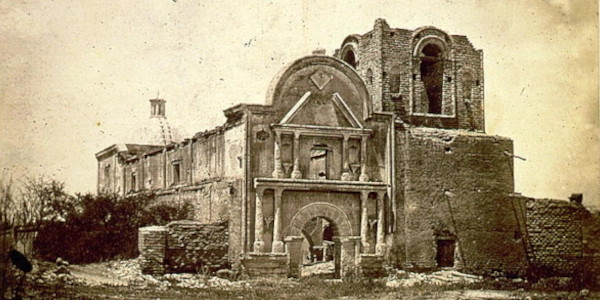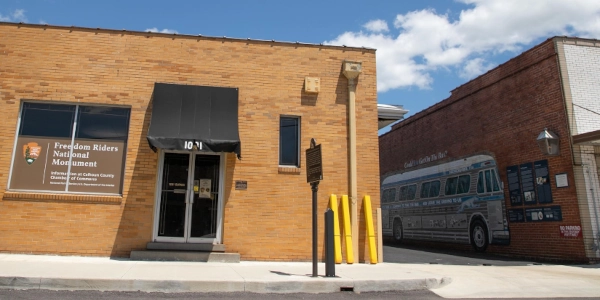
Image above: Drawing of the Burning of Jamestown during Bacon's Rebellion, 1905, Howard Pyle. Courtesy Wikipedia Commons via archives.org.
Spotlight on Lesser Known History
Bacon's Rebellion
Virginia
America's Best History Spotlight
On this page we're going to Spotlight the lesser known historic sites and attractions that dot the history landscape across the USA and are worth a visit if you're in their area. And while they may be lesser known, some are very unique, and will be that rare find. You'll be, at times, on the ground floor, or maybe even know something others don't. It'll be fun. Visit them.
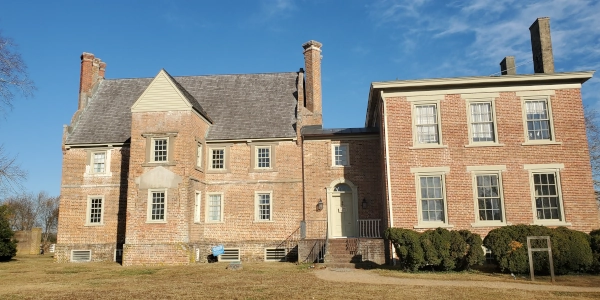
Bacon's Castle, Virginia
The Allen family had originally purchased two hundred acres and built a small house; that two hundred acres would grow to over two thousand and it became a prosperous, at times, linen plantation run by indentured servants and slave labor. By 1665, Allen's Brick House, would be built. By 1676, it would forever be known as Bacon's Castle when Nathaniel Bacon's used it as a fort, house to plunder (they never found the silver), and place to surrender. Why did they attack and occupy this house? William Allen II, son of the original owner, was a Major in the Governor's forces and a personal friend, the man, William Berkeley, that the rebels of Nathaniel Bacon were fighting against. Today you can visit the site; your tour will include all centuries of its existence, including Bacon's Rebellion.
Photo above: Front view of the house now known as Bacon's Castle due to its role in Bacon's Rebellion. Left two thirds of the house are the original structure. Courtesy America's Best History.
Sponsor this page for $100 per year. Your banner or text ad can fill the space above.
Click here to Sponsor the page and how to reserve your ad.
Info, What's There Now, History Nearby
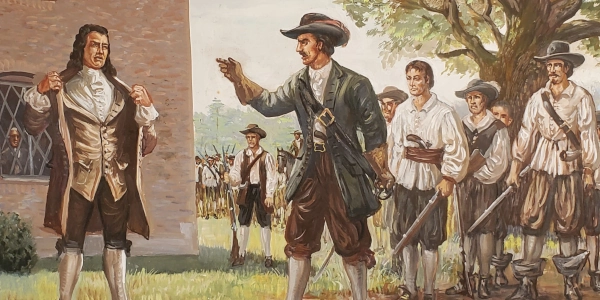
Bacon's Castle, Virginia
It had predominantly been known as Allen's Brick House prior to the rebellion against Governor William Berkeley led by Nathaniel Bacon in 1676. It was built as a lavish plantation mansion, the oldest standing brick dwelling in the United States. However, when seventy or so men of Bacon's militia occupied the house and used it as a fort during the latter days of the rebellion for three months, Bacon's Castle is what it would be referred to from then on. Nathaniel Bacon never visited the house; he died several days into its occupation and thus the rebellion began to wane. Fresh troops from the British navy and militia would attack the fortress in a short skirmish. Many of Bacon's men had fled with ransacked goods. There were twenty to thirty rebels left. They were captured, then hung. It is a unique treasure to visit, an out of the way treasure, yet very close to Colonial National Historical Park, Yorktown, Jamestown, and Williamsburg. Tours of the house are wonderful. Some of the outbuilding reminders of its slave past during the Allen family and subsequent family ownership still stand. Yes, bad history, but important history.
Image above: Painting of Governor Berkeley baring his chest toward Nathaniel Bacon, daring his men to shoot him. Photo of painting in exhibit gallery of Bacon's Castle, 2023. America's Best History. Below: Interior of the slave cabin in rear of Bacon's Castle property, 2023. Courtesy America's Best History.

Where Is It
Bacon's Castle, ne Allen's Brick House, is located on the south side of the James River, several miles from Jamestown, which is on the north side. It is located at 465 Bacon's Castle Trail, Surry, Virginia 23883. This is approximately one hour from Richmond.
Minute Walk in History - Bacon's Castle
Take a walk in history on the grounds and in the home originally built by Arthur Allen in 1850. It had predominantly been known as Allen's Brick House prior to the rebellion against Governor William Berkeley of Jamestown and the Virginia Colony, led by Nathaniel Bacon in 1676. It was built as a lavish plantation mansion, the oldest standing brick dwelling in the United States. However, when seventy or so men of Bacon's militia occupied the house and used it as a fort during the latter days of the rebellion for three months, Bacon's Castle is what it would be referred to from then on.
What is There Now
Bacon's Castle
Inside the new section of the house is the visitor center, a museum, and gift shop. Your tour of the original 1665 structure will take you through the original living quarters, bedrooms, basement kitchen, and attic, where the house slaves would live. This plantation was predominantly run to provide goods to make linen. Think lots of looms. The forty-five minute tour of the interior is a must. The exterior cell phone self-guided tour of the grounds and outbuildings provides you with the context of where you are, sans Bacon's Rebellion. There are picnic tables under the trees of the front lawn. The site is run by Preservation Virginia.
When Open and How Much
Adult charge is $15. Discounts for children and others. Free under six. The site is open 10:00 am to 5:00 pm, except certain holidays and weeks. Usually open Friday to Monday, only Friday to Sunday after certain times of the year. Please call ahead or check their website for dates and times as they may change frequently.
Fees and hours are subject to change.
Websites
Bacon's Castle
History Nearby
You are very close to all those sites previously mentioned, although most are on the other side of the James River. There are also many smaller historic sites nearby. Ask at the Visitor Center for suggestions of those even closer like John Marshall's House and Patrick Henry's Scotchtown.
Photos, History, and More Spotlights

Nathaniel Bacon
Nathaniel Bacon was a young man when he emigrated, in exile, to the Colony of Virginia, due to legal trouble in England. He bought two frontier plantations along the James River, and got appointed to the Governor's Council in 1675. There was constant debate over Indian policy. Some colonists wanted even the friendly Indian tribes to be pushed off their land, or killed. Over the subsequent years, various factions fought with the Native Americans constantly, and when two white settlers were killed, Nathaniel Bacon and others in the government were done with Berkeley's ineffective policies and corruption.
Thus Bacon's Rebellion was born. With five hundred frontiersmen, Bacon confronted Berkeley, burned Jamestown on September 19, 1676, and went on raids of Indian villages. During this period, seventy of his rebels took over William Allen II's Brick House, turning it into Bacon's Castle. But on October 26, 1676, Bacon would die, and his replacement, John Ingram, could not keep the rebellion going, particulary with one thousand new troopers from England arriving to quell the rebellion.
Photo above: Drawing of Nathaniel Bacon, unknown artist and date.
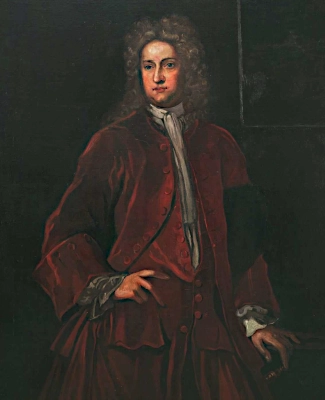
Governor William Berkeley
Governor William Berkeley was an original proprietor of the Colony of North Carolina, but eventually transitioned, as favorite of the King, to become governor of the Virginia Colony from 1641 to 1652, then 1660 to 1677. He was not a popular governor, breeding dissent among its citizens, particularly the Puritans and Quakers, failing to protect them from the tribes of the area, and causing Bacon's Rebellion due to his indecision on commissioning Nathanial Bacon to raise a militia and thwart the Native American threat. At the time of Bacon's Rebellion, Berkeley was seventy-one years old.
Nathaniel Bacon was the nephew of Berkeley's wife, and she convinced the governor to give Bacon a position in the government. But Bacon and Berkeley disagreed on Indian policy and after a series of events, Bacon eventually raised five hundred fighters to quell the Indians to Berkeley's displeasure. Thus Bacon turned his attention to fighting for the removal of Governor Berkeley. The rebellion burned Jamestown, but after Bacon's death, the effort fizzled. When one thousand troops arrived from England, the end of the rebellion was quickly achieved. London, however, was not pleased with Berkeley, and sent for him. Once in England, he was brought up on charges due to the rebellion, but died prior to a trial.
Image above: Portrait of Governor William Berkeley, 1663, Hariott L.T. Montague after Sir Peter Lely. Photo of painting 1917. Courtesy Wikipedia Commons via archive.org.
Buy Second Edition
America's Best History Timeline

Great book to keep middle school to college students up to date on their American history.
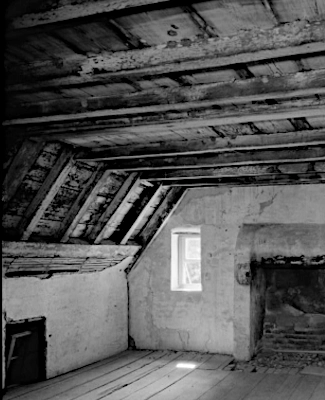
Allen's Brick House
Arthur Allen emigrated to the Colony of Jamestown with his wife and several indentured servants. He bought two hundred acres and, at first, built a small house to accommodate them. In 1665, he built a five thousand square foot brick house in Jacobian style several miles south of the James River. Arthur Allen and his son William Allen II, often referred to as Major Allen, would expand the operation to eventually include over two thousand acres and three hundred slaves. Major Allen was a friend of Governor Berkeley and had left Allen's Brick House before the rebels arrived in September 1676 to take it. He knew that his house would be a target of Bacon's men.
After the rebellion, several families would succede Allen, notably the Hankins family. The standing slave quarters were built circa 1831. It would continue to be a slave labor plantation until the Civil War emancipated its forced workforce and took the slave labor from the Hankins. Virginia Hankins sold the estate, smaller now after the Allen era, in 1872. It would be bought in 1880 by William Allen Warren. Additional owners ran the property by renting it out to tenant farmers with mixed success. Preservation Virginia bought forty acres of the property and Bacon's Castle in the 1970's.
Photo above: Slave quarters in attic of Allen's Brick House; some slaves slept in the small crawl space to the left, 1936, Francis Benjamin Johnston. Courtesy Library of Congress.

T-Shirts and Gifts from the official souvenirs of Americasbesthistory.com.
About
America's Best History where we take a look at the timeline of American History and the historic sites and national parks that hold that history within their lands.
Photos courtesy of the Library of Congress, National Archives, National Park Service, americasbesthistory.com and its licensors.
- Contact Us
- About
- © 2023 Americasbesthistory.com.
Template by w3layouts.
